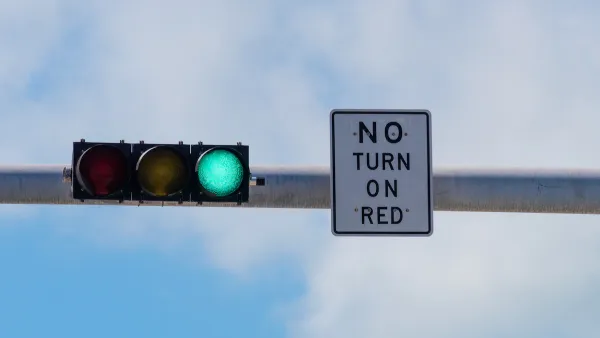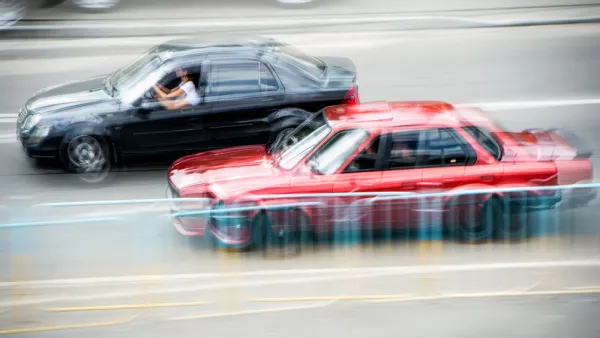Sarah Goodyear chronicles the transition of streets in America from public space to the exclusive domain of autos. Professor Peter Norton, author of "Fighting Traffic: Dawn of the Motor Age" explains the ingenuous strategy of the auto industry.
Before Goodyear wrote about how Amsterdam and Copenhagen became so bicycle-friendly, she provided a short history of how the car, more precisely, the auto industry, did take over American streets. One of the more fascinating episodes took place in 1923 in Cincinnati when residents, outraged at all the children killed by autos, placed a ballot measure that "would have required all vehicles in the city to be fitted with speed governors limiting them to 25 miles per hour."
"Peter Norton, an assistant professor at the University of Virginia and the author of Fighting Traffic: The Dawn of the Motor Age in the American City, has done extensive research into how our view of streets was systematically and deliberately shifted by the automobile industry, as was the law itself."
Historically, "the principles of common law applied to crashes. In the case of a collision, the larger, heavier vehicle was deemed to be at fault. The responsibility for crashes always lay with the driver. Public opinion was on the side of the pedestrian. "There was a lot of anger in the early years," says Norton. "A lot of resentment against cars for endangering streets."
To respond to the Cincinnati referendum, the auto industry went into overdrive, sending letters to motorists, enlisting dealers and local auto clubs, and most of all, organizing the Detroit auto companies themselves. And they didn't stop after defeating the referendum.
"The industry lobbied to change the law, promoting the adoption of traffic statutes to supplant common law. The statutes were designed to restrict pedestrian use of the street and give primacy to cars. The idea of "jaywalking" – a concept that had not really existed prior to 1920 – was enshrined in law."
Thanks to Pat Carstensen
FULL STORY: The Invention of Jaywalking

Analysis: Cybertruck Fatality Rate Far Exceeds That of Ford Pinto
The Tesla Cybertruck was recalled seven times last year.

National Parks Layoffs Will Cause Communities to Lose Billions
Thousands of essential park workers were laid off this week, just before the busy spring break season.

Retro-silient?: America’s First “Eco-burb,” The Woodlands Turns 50
A master-planned community north of Houston offers lessons on green infrastructure and resilient design, but falls short of its founder’s lofty affordability and walkability goals.

Test News Post 1
This is a summary

Analysis: Cybertruck Fatality Rate Far Exceeds That of Ford Pinto
The Tesla Cybertruck was recalled seven times last year.

Test News Headline 46
Test for the image on the front page.
Urban Design for Planners 1: Software Tools
This six-course series explores essential urban design concepts using open source software and equips planners with the tools they need to participate fully in the urban design process.
Planning for Universal Design
Learn the tools for implementing Universal Design in planning regulations.
EMC Planning Group, Inc.
Planetizen
Planetizen
Mpact (formerly Rail~Volution)
Great Falls Development Authority, Inc.
HUDs Office of Policy Development and Research
NYU Wagner Graduate School of Public Service




























